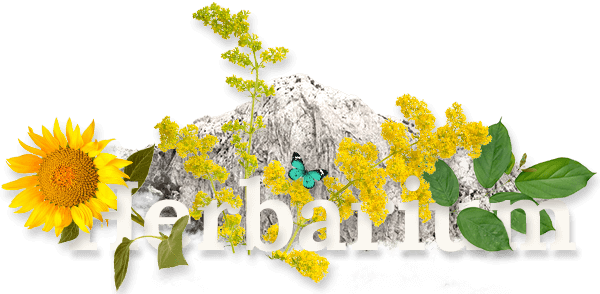Izradu internetske stranice sufinancirala je Europska unija u okviru operativnog programa Konkurentnost i kohezija iz Europskog fonda za regionalni razvoj.
saznajte više

MISTLETOE
lat. Viscum album
Other names: European, Christmas and oak mistletoe, druid’s herb, golden bough, holy wood, the kissing bush, herbe de la croix
Scroll
Habitat:
Viscum album grows in Europe, northwest Africa, and central Asia and Japan. It is a perennial, semi-evergreen parasitic plant, growing on the branches of trees. It is most commonly seen on old apple, ash, and hawthorn trees; although mistletoe does not grow as well on oak trees, mistletoe from oak trees has traditionally been the most commonly used as herbal medicine.
Description:
Mistletoe has opposite, thick, leathery leaves that are oval or lance-shaped and about two inches long. These form a drooping yellowish evergreen bush about 2-3 feet long on the branch of a host tree. It has densely crowded branches with oval to lance-shaped leaves about 2 inches long. The flowers, in compact spikes, are bisexual, unisexual, or regular. They are yellower than the leaves and appear in the late winter. These become one-seeded, white berries, which when ripe are filled with a sticky, semi-transparent pulp. The seeds are eaten by birds and spread by them to other trees.
Plant Parts Used:
Leaves and stems.
Pharmaceutical use:
The active constituents present in the plant are mistletoe lectins I, II and III (glycoprotein); viscotoxin (protein); galacturonan, arabinogalactan (polysaccharides), and alkaloids. Mistletoe was a sacred plant of the Celtic peoples; the Celts and Gauls called it “all-heal” or “cure-all”. Mistletoe is used by traditional herbalists as a nervine, antispasmodic, tonic and narcotic and European herbalists considered it to be a specific remedy for St. Vitus’s Dance, epilepsy and other convulsive nervous disorders. It has a long history as an herbal treatment for delirium, hysteria, neuralgia, and nervous debility and mistletoe tincture was used as a heart tonic in typhoid fever. Herbal practitioners have used this herb as a treatment for urinary disorders, heart disease, and other symptoms arising from a weakened or disordered state of the nervous system. Mistletoe has been used to lower blood pressure and heart rate, ease anxiety, and as an herbal sleep aid. The herb was traditionally used throughout Europe as a remedy for headaches, dizziness, loss of energy and irritability. It has been used as a traditional herbal remedy for the treatment for cough, especially convulsive cough, bronchial asthma, and asthmatic attacks due to psychological tension. Traditional herbal medicine uses the herb as a natural treatmentfor arthritic pain and it is believed to be an effective external treatment for leucorrhoea, gout and sciatica.Numerous studies have reported that the plant lectins, in Viscu album possess toxic, cytotoxic, antitumor, and anticarcinogenic properties. Research is currently being done in Europe to determine their potential in cancer chemotherapy and in Germany, extracts of European mistletoe is sometimes used as a treatment for certain types of cancer.
Cautions:
Please be aware that herbs, although natural can interact with certain medications, and that they may be ill advised to use under certain health conditions. Please consult a qualified health practitioner for cautions pertinent to you.
No therapeutic claim is made or intended for AZENA products. Information is for educational purposes only.




